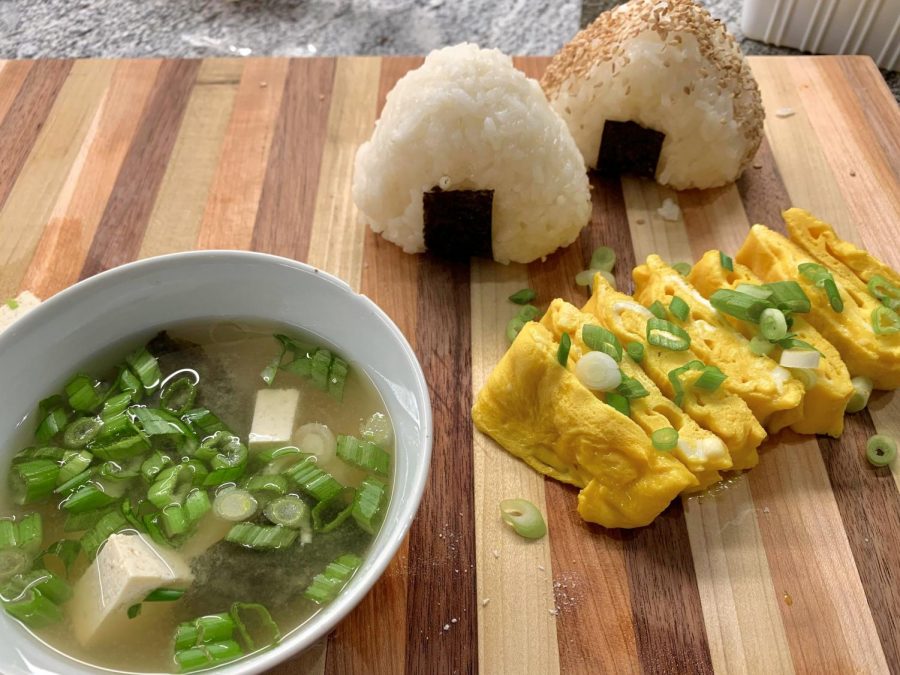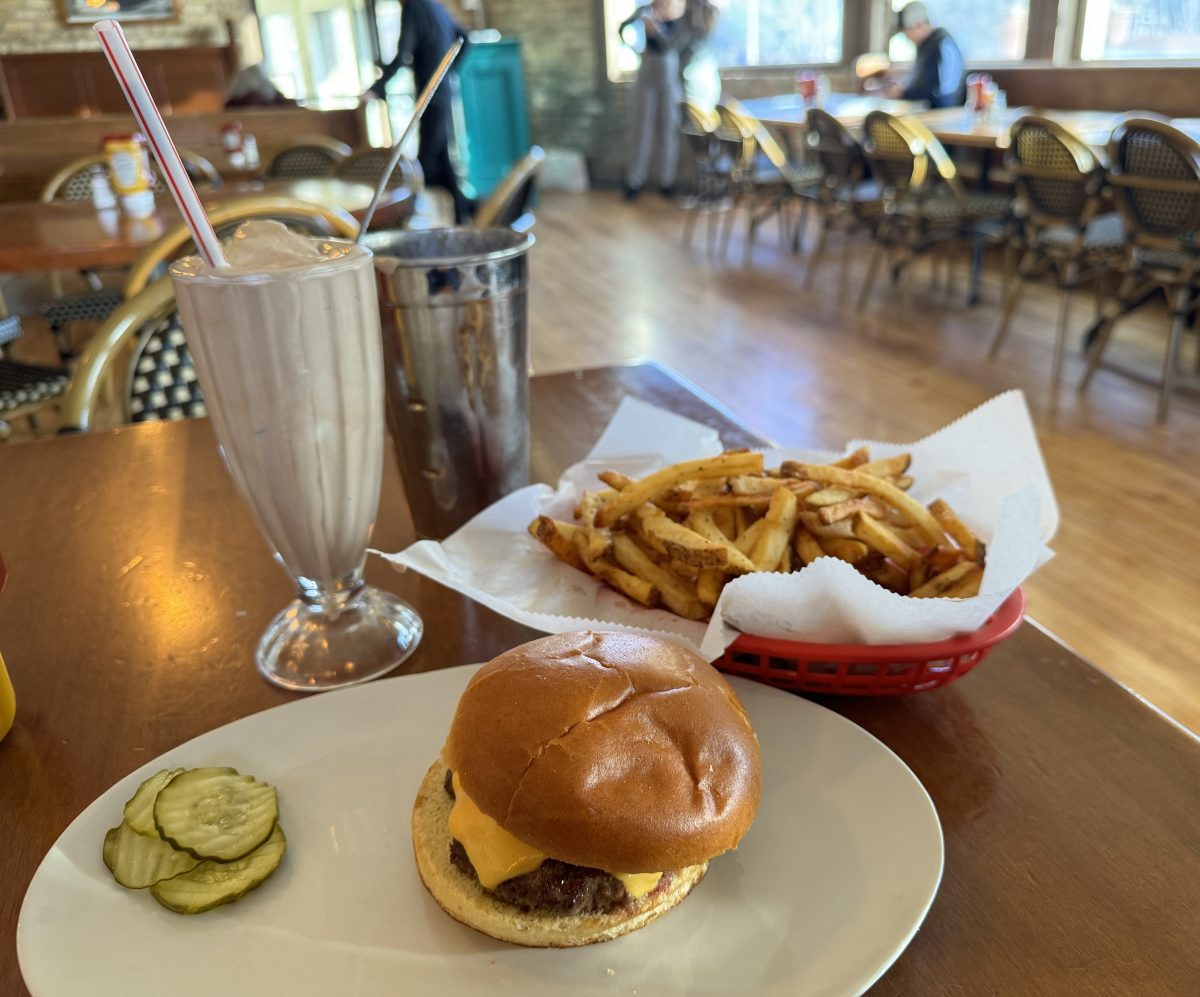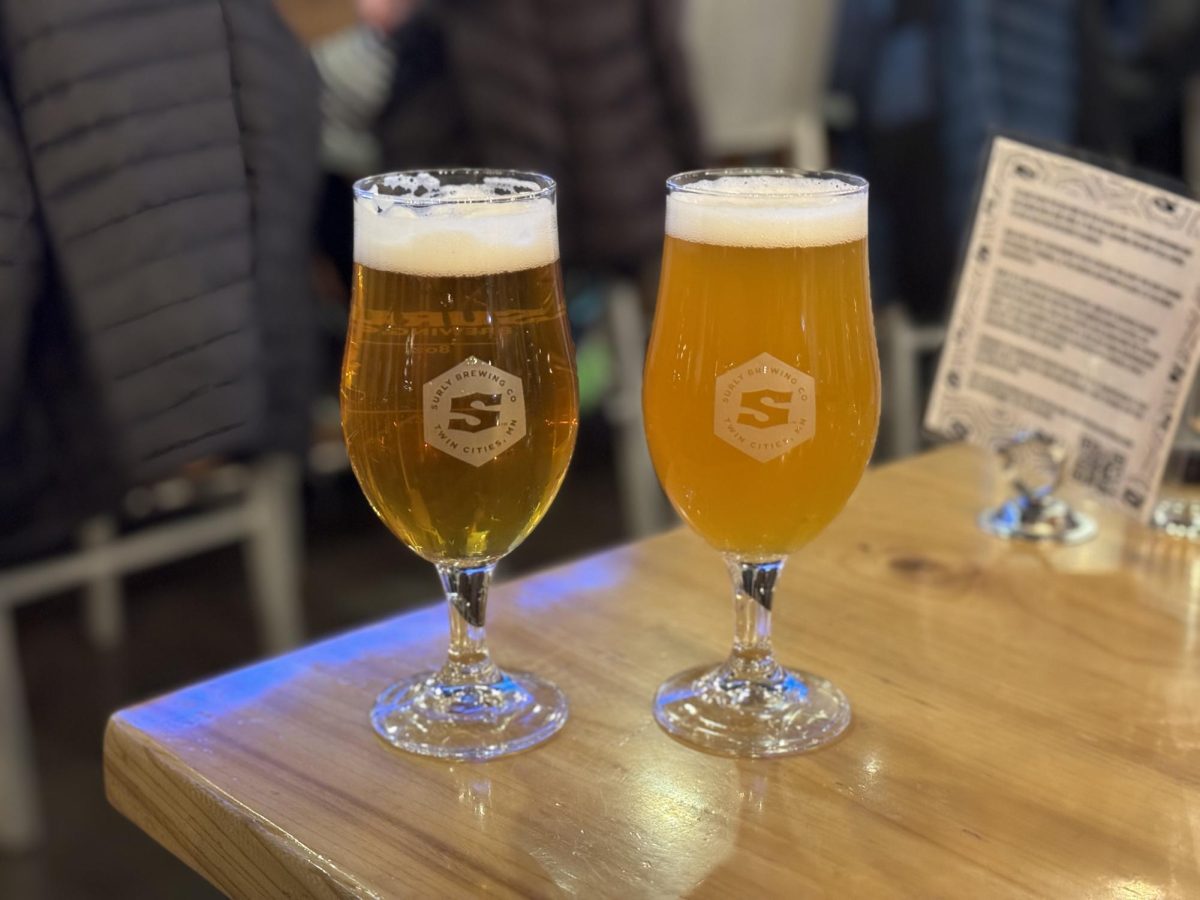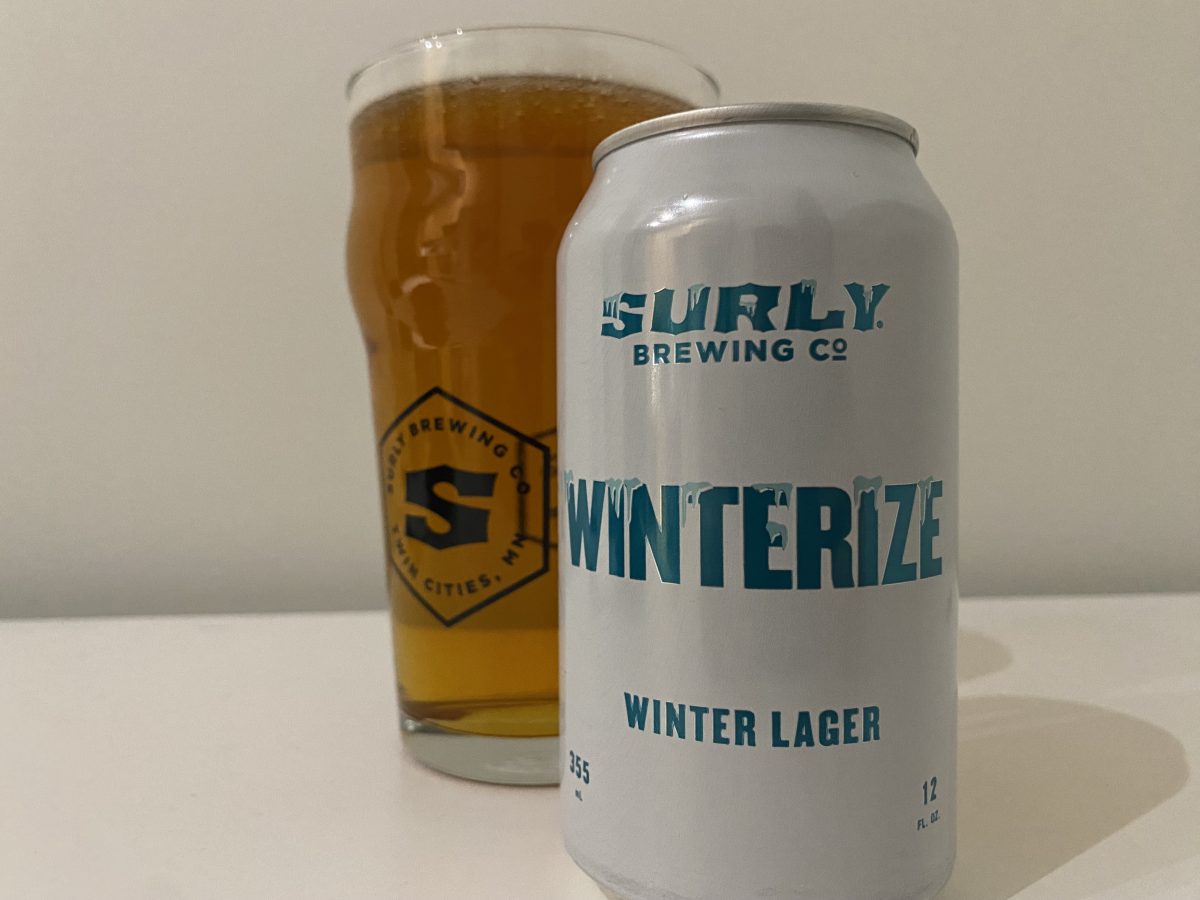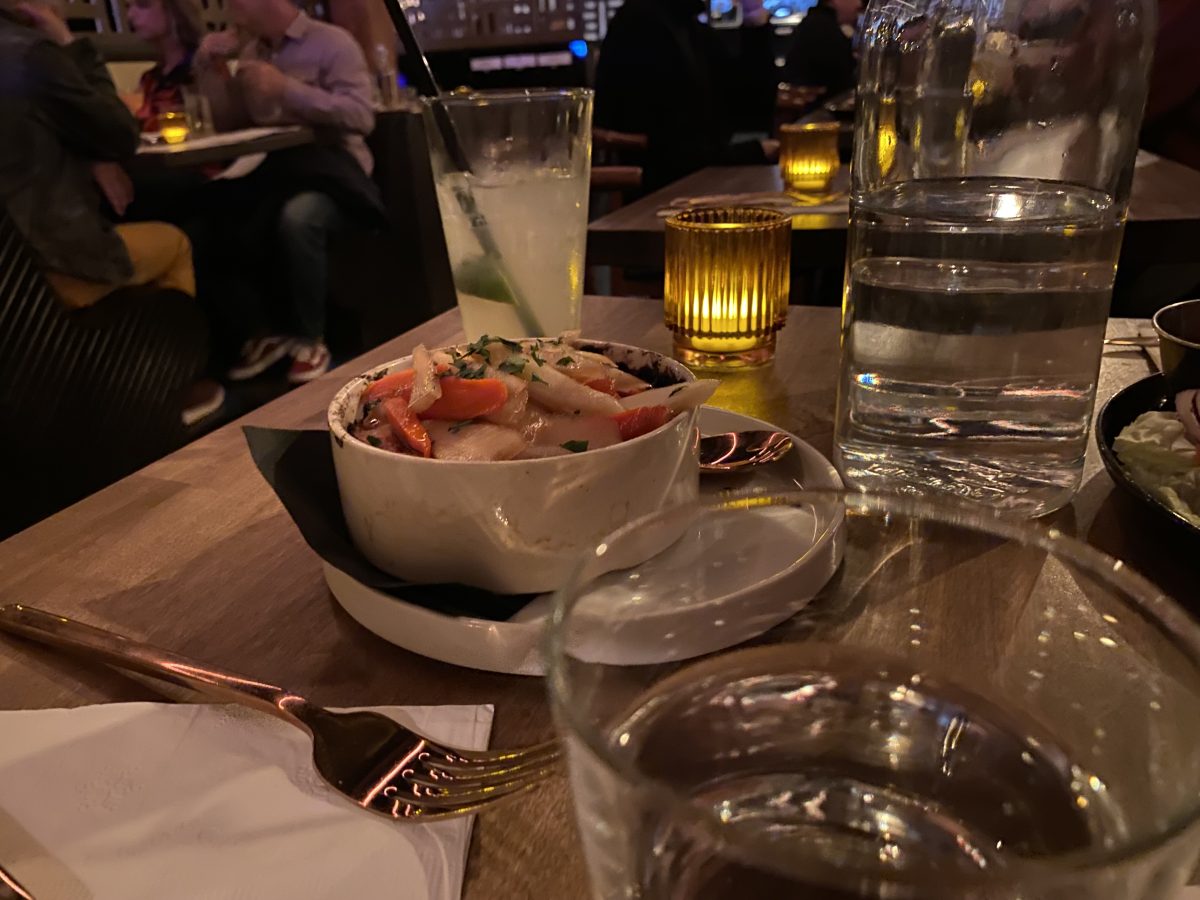Whenever Emma Heverly visits family in Japan, she knows there’s onigiri waiting for her.
After landing at the Narita International Airport as a kid, she’d await her grandparent’s arrival. With them, they’d bring a big plastic bag filled with treats — katsu sandos, Kinoko No Yamas, green teas — but the most nostalgic food of all came in the form of a neat, nori-wrapped rice ball called onigiri. As they made the two-hour drive from the airport to their home in Kokubunji, Emma would indulge herself in these treats, onigiri especially.
“We’d sit there and just eat ourselves to death. Not even because we were hungry, but just because it was comforting and it felt like you came home,” Heverly, a member of the Japanese Student Association (JSA), said.
At the JSA’s Sawakai Party on Friday, March 26, members prepared onigiri, as well as tamagoyaki and miso soup.
In Japanese, “sawakai” means “tea party.” Before COVID-19, JSA (formerly J-Cafe, but they recently merged with the pre-existing JSA in early January) would host bi-weekly gatherings that centered around food, art, language and culture. The events turned virtual once the pandemic hit, and the sawakai continued.
Members of the group gathered their ingredients and congregated on Zoom to cook miso soup, tamagoyaki and onigiri together while they were physically apart. For two hours, they balled short grain rice for onigiri, chopped scallions for miso soup and whisked eggs into tamagoyaki.
To the members of JSA, these foods transport them back to their fondest memories of Japan; whether it’s the knowledge that an onigiri awaits Heverly’s arrival, the first bowl of miso soup JSA co-president Kayla Lovegren shared with her host family when she studied abroad, or external vice president Lilly Thach assembling the rice ball with her fellow kindergarteners as a young girl.
Onigiri is a rice ball, sometimes stuffed with filling, sometimes triangular, that Heverley equated to “Japanese peanut butter and jelly.” As a kid, she’d constantly eat salmon or tuna mayo-filled onigiri, and her favorite onigiri always came from Japanese convenience stores, where they came meticulously wrapped with crispy sheets of nori, according to Heverly.
Tamagoyaki is a fluffy, rolled omelet that uses a special cooking method and makiyakinabe pan to create a square-shaped omelet. While the makiyakinabe is traditionally used to make tamagoyaki, a circular pan works just as well if you don’t have a square pan on hand.
“It sounds super simple, but it’s different from the way Americans cook eggs because it’s fluffier and there’s more of an umami flavor to it,” Thach said.
Miso soup, a staple in Japanese cuisine, uses fermented soybean paste, tofu and greens, and is eaten with breakfast, lunch and dinner in Japan.
Lovegren studied abroad in Japan as a 16-year-old. She was filled with nerves during her first night in the town of Saiki, located in the coastal Ōita Prefecture on Kyushu Island. As she sat down with her host family to eat miso soup and speak Japanese, it began to feel like home.
“Once things were laid out on the table and we were conversing back and forth, it really felt like family,” Lovegren said. “And my [host] mom’s cooking was of course amazing and yummy.”
Miso soup
Ingredients
– 2 cup of dashi stock, vegetable stock, or other stock of your choosing
– 1-2 tablespoons miso paste
– ¼ cup hot water
– 1 stalk of spring onions, chopped
– Nori
– Optional addition of tofu and leafy greens
Heat stock in a pan. In a small bowl with ¼ cup hot water, stir together the miso paste and the water to create a smoother mixture. Add the mixture into the pot.
As the soup simmers, add your nori, as well as tofu and other greens if you are using them. Ladle into bowls, and sprinkle with green onion.
Ingredients
– ⅛ teaspoon dashi powder
– ⅛ teaspoon salt
– ¼ teaspoon soy sauce
– ½ tablespoon sugar
– ¼ cup water
– 2 eggs
– oil, for brushing
In a small bowl, combine the dashi, salt, soy sauce, sugar, and water. Mix until everything is dissolved.
In a medium bowl, beat the eggs and add the seasoning mixture. Mix until well-combined.
Heat a tamagoyaki pan over medium-high heat. Brush a thin layer of oil on the pan.
Pour a third of the egg mixture into the pan and quickly swirl to cover the entire pan. When the egg is half-set, gently roll the egg.
With the rolled egg still in the pan, pour in another third of the egg mixture. Lift up the rolled egg and let the mixture flow under it. When the egg is half-set, roll the omelette toward you. Repeat with the rest of the egg mixture.
Slice into bite-sized pieces.
Enjoy!
Onigiri
Ingredients
– 1 cup of steamed short-grain sushi rice
– 1 sheet of nori, cut into long strips
– Salt to taste
– 3 tablespoons of sesame seeds or furikake for decoration
– Optional filling of chopped tuna or salmon mixed with Kewpie mayo
Separate the rice into three equal parts. Using plastic gloves, or dipping your hands in water and salt so that the rice doesn’t stick, take one portion of the rice, cupping one hand and flattening the other to create a triangular shape. Flatten the sides once the triangular shape is achieved for a uniform look. If you’re making onigiri with a filling, separate the rice into two, adding the filling to the center, and then close the cup with another layer of rice and form into a triangular shape.
Wrap the nori around the bottom of the onigiri. Sprinkle with sesame seeds and enjoy.








